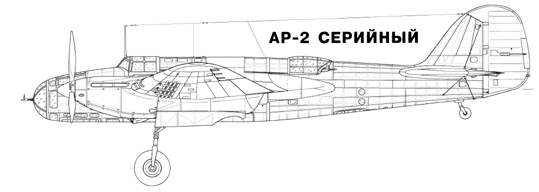
|
by Massimo Tessitori |
|
|
In the beginning of 1940, the Archangelskiy construction bureau
in Zavod 22 aircraft factory worked hard on a perfectioning of the Tupolev
SB bomber.
Two steps of development were taken in consideration:
In 1939, TsAGI (The Central Istitute for Aero and Hydrodynamics) developed
a special bomb lock called PB-3, that allowed SB to throw bombs while diving.
Tests were performed by the crews of Major Zhdanov, Captain Kovalchuk
and Senior Lieutenants Subbotin and Piskunov, and show the good functioning
of this device.
During trials of dive bombing from at an angle of 80°", crews confidently
stacked bombs in a circle with a radius of 57 m at height of dump of bombs
of 2000 m and in a circle with a radius of 126 m at height of dump of bombs
of 4000 m.
For safe recovering after dive, a overload limitator was developed.
This acted on elevators, limiting the overload to a pre-setted value (usually
2,9 g) whatever the diving angle, speed, bar position were.
On July, 15th, 1940 army tests of five serial bombers SB with 2M-105
and airscrews VISh-22E in diving variant began. The bomb lock PB-3 was
installed. Simultaneously, also bombers with PB-3 and propellers VISh-23
were tested, also in diving variant.
SB-RK, later Ar-2

The SB-RK was not only a further perfectioning of the unsuccessful SB-MMN,
but it was projected for dive bombing too.
In 1939, TsAGI (The Central Istitute for Aero and Hydrodynamics) had
developed a special bomb lock called PB-3, that allowed SB to throw bombs
while diving.
First tests were performed by the crews of Major Zhdanov, Captain Kovalchuk
and Senior Lieutenants Subbotin and Piskunov, on an SB-2-M-105, and show
the good functioning of this device.
During trials of dive bombing from at an angle of 80°", crews confidently
stacked bombs in a circle with a radius of 57 m at height of dump of bombs
of 2000 m and in a circle with a radius of 126 m at height of dump of bombs
of 4000 m.
For safe recovering after dive, an automatic command was actioned to
recover the aircraft from dive immediately after pushing the bomb release
button.
An overload limitator was developed. This limited the overload to a
pre-setted value (usually 2,9 g) whatever the diving angle, speed, bar
position were.
When compared to SB-MMN, SB-RK featured:
|
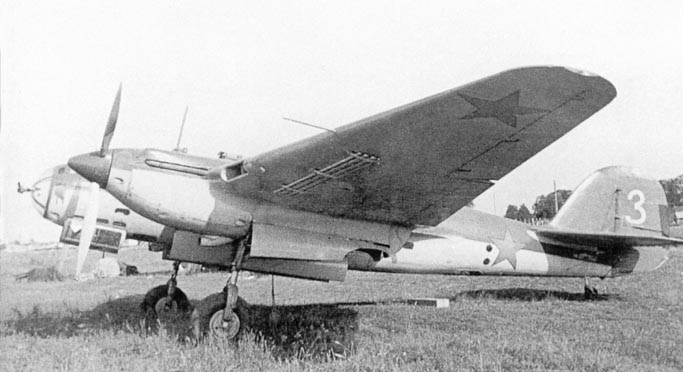 |
|
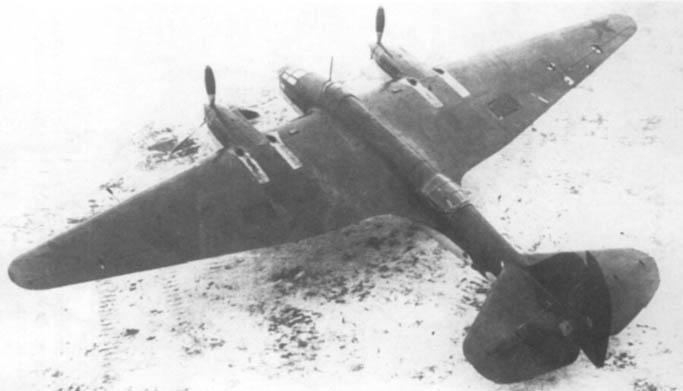 |
|
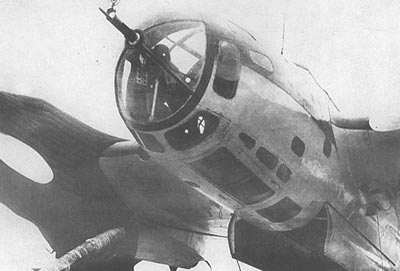
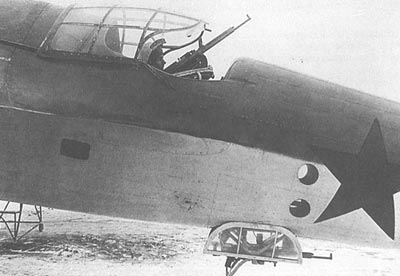 |
Factory test of two prototypes of SB-RK started in October 1940. The
main defect was the overheat of water (95-100°C) and oil (110-115°C),
and insufficient longitudinal stability.
The third prototype was completed in November 1940, and it was transferred
to NII-VVS for state tests.
This aircraft had some improvements on the first two prototypes: the
shutters at the outlet of water cooling tunnels was reduced to 5, the rudder
depth was changed.
In December 1940, an order of NKAP (the People's Commissariat for Aviation
Industry) renamed the aircraft as Ar-2, from the surname of its designer
A.A. Archangelskij.
The state tests were completed in January 1941; the head engineer was
M.I.Yefimov, while the test pilots were Major W.I.Zhdanov and Captain A.M.Hripov.
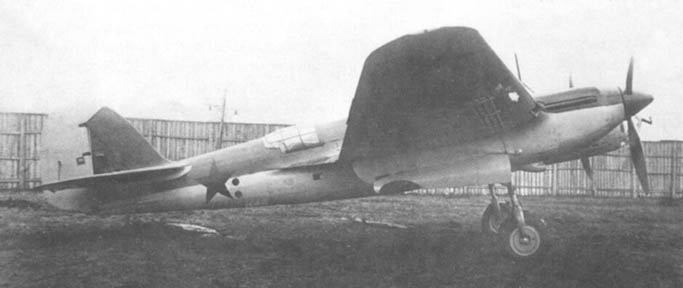 |
Amongst the performances measured by NII-VVS there were:
|
The plane was able to fly with one engine only.
Many diving tests were made.
The second prototype SB-RK,designated N1/281, was tested in dive bombing
with angles up to 75°.
When starting a dive from 4000 m altitude with a speed of 290 km/h,
it lasted for 9 s (sufficient for aiming bombs), then, after dropping bombs,
it automatically ended the dive at 550 km/h maoeuvering at 4,5 g.
Both the brakes, the bombing release mechanism and the automatic device
to end the diving at bomb dropping functioned trouble-free.
The cooling and lubrificating system of the M-105 engines was a terribly
weak point. The full power of the engine caused water overheating at 110°C
when the ambiental temperature was only -10°C. The lubrification system
overheated and destroyed the radiators 12 times during the tests.
The armament installation had some defects too, that caused vibrations,
bad stability of machine guns and delays in firing.
Besides, the 7,62 mm ShKAS were not lethal enough against modern fighters;
this defect was common to all the Soviet bombers of the time.
The report of NII-VVS said that Ar-2 was a great improvement over the
SB, but its speed it was not comparable with better Soviet and foreign
bombers of its age.
The handling of Ar-2 was good, even easier than SB.
The aircraft was good enough for operative use, should its main defects
be eliminated.
In February 1941, a new prototype (N1/511) was delivered to NII-VVS;
the engines M-105R were moved forward by 150 mm for balancing reasons;
the VIT1T-22E propellers with 3.1 m diameter were adopted; the reduction
rate of engine gears was 0.59 instead than 0.66.
Air brakes were thinner, the exhaust stacks were shaped to obtain some
jet thrust, and the surface finish was improved.
Thank to these improvements, the aircraft reached a speed of 443 km/h
at ground level, and of 512 km/h at the altitude of 5000 m.
The aircraft was pushed in production in late 1940, but the availability
of the faster Pe-2 and the first flight of the new plane "103" "AM-37 (the
prototype of Tu-2) made clear that this was an interim solution.
The "103" was able of more than 600 km/h, was strongly armed and it turned
any other existing bomber into an obsolete one. However, Tui-2s got full
operational state only in 1944.
So, 190 Ar-2 were produced in Zavod 22 when it turned the production
to the Pe-2 in the first half of 1941.
The operative life of Ar-2 was very limited not only due to its limited
production, but also because a lot of them were destroyed or captured on
the ground or sent to attack the enemy without any escort in the first
days of war. According to official sources, 95 Ar-2 were lost during 1941.
Some authors regret the stop of production of Ar-2 in favour of Pe-2
because, if it's true that Pe-2 was 20-40 km/h faster and had a greater
range, it's also true that the Ar-2 had better bombing qualities and was
able to accept rough landings by far better than the Pe-2, many of which
were written off in this way when their fuselage broke.
|
|
click on images to see larger ones
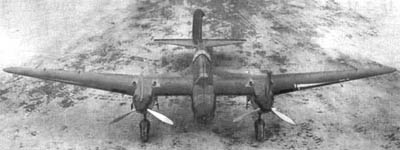
|
Some images of Ar-2 prototypes in 1940. |
|
|